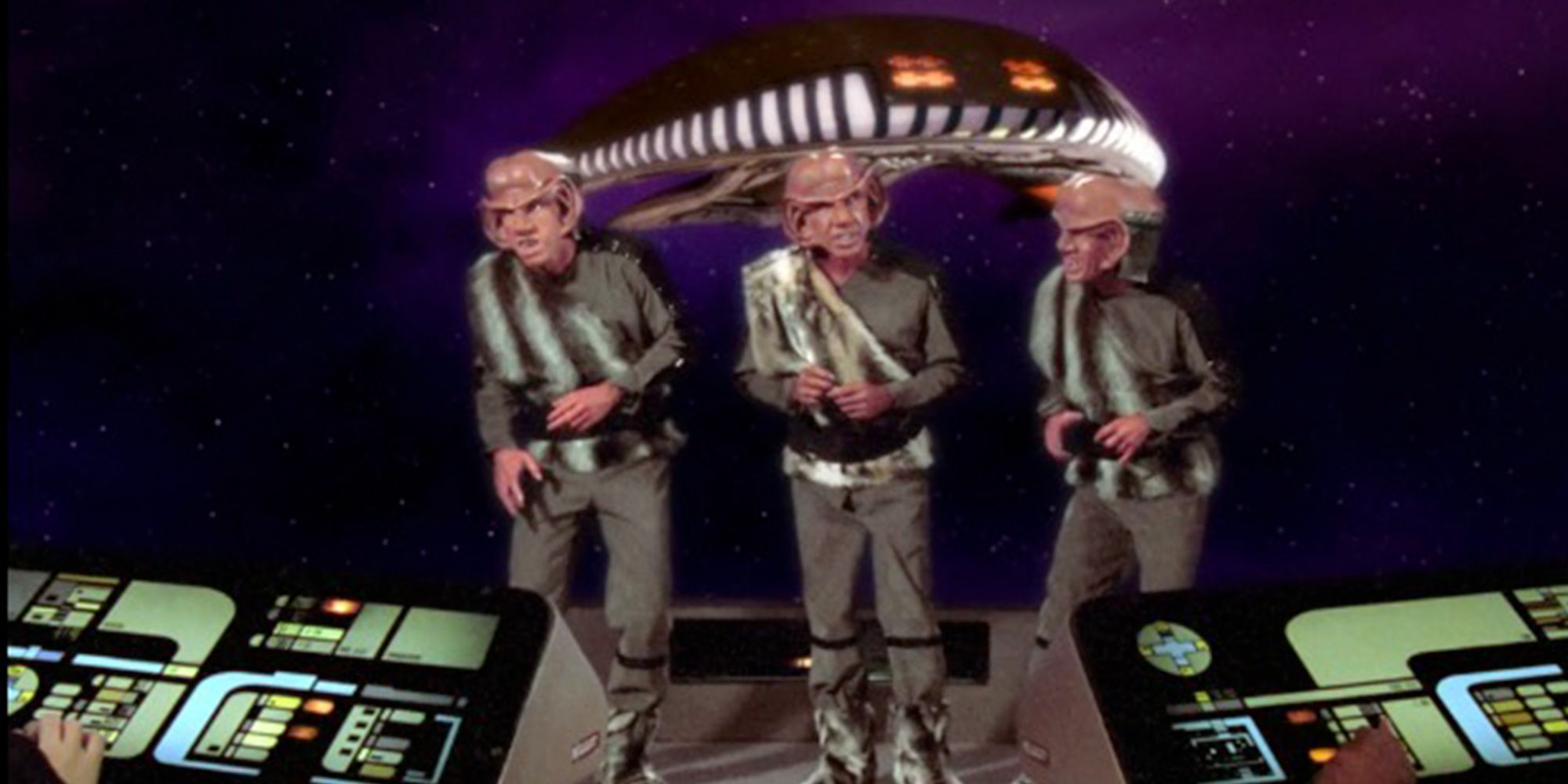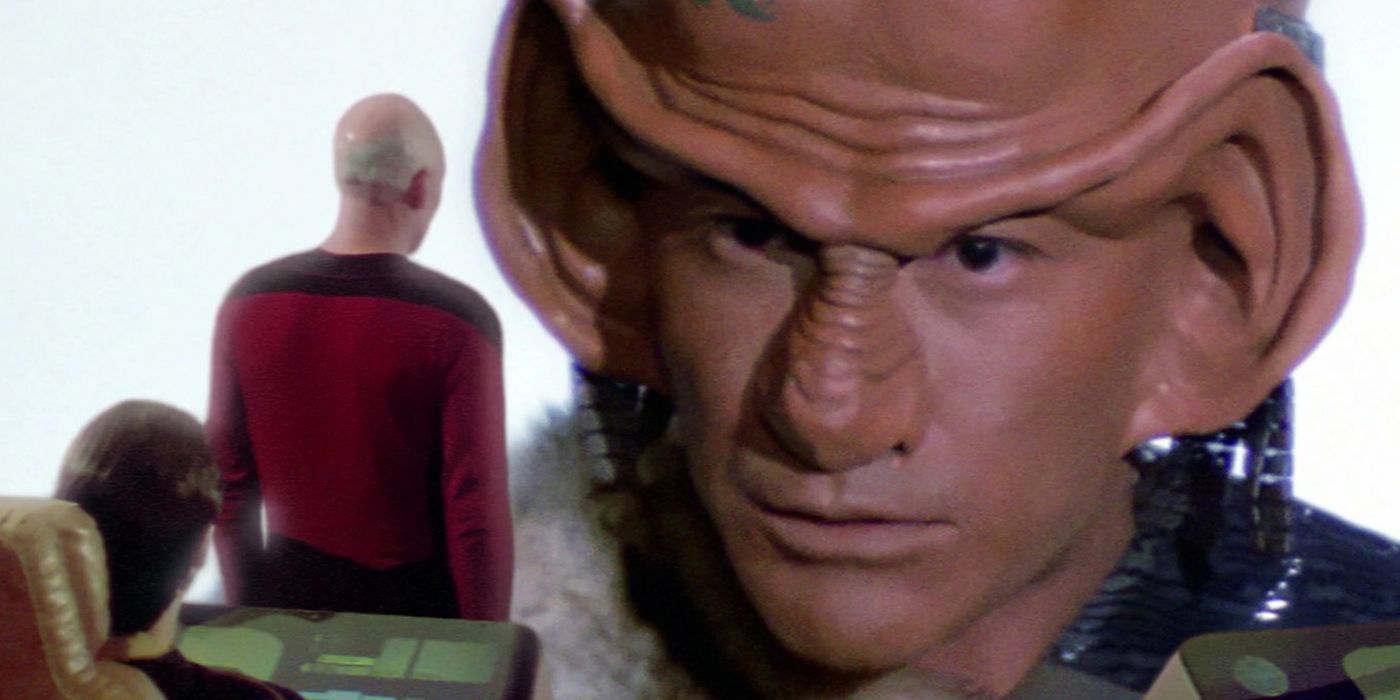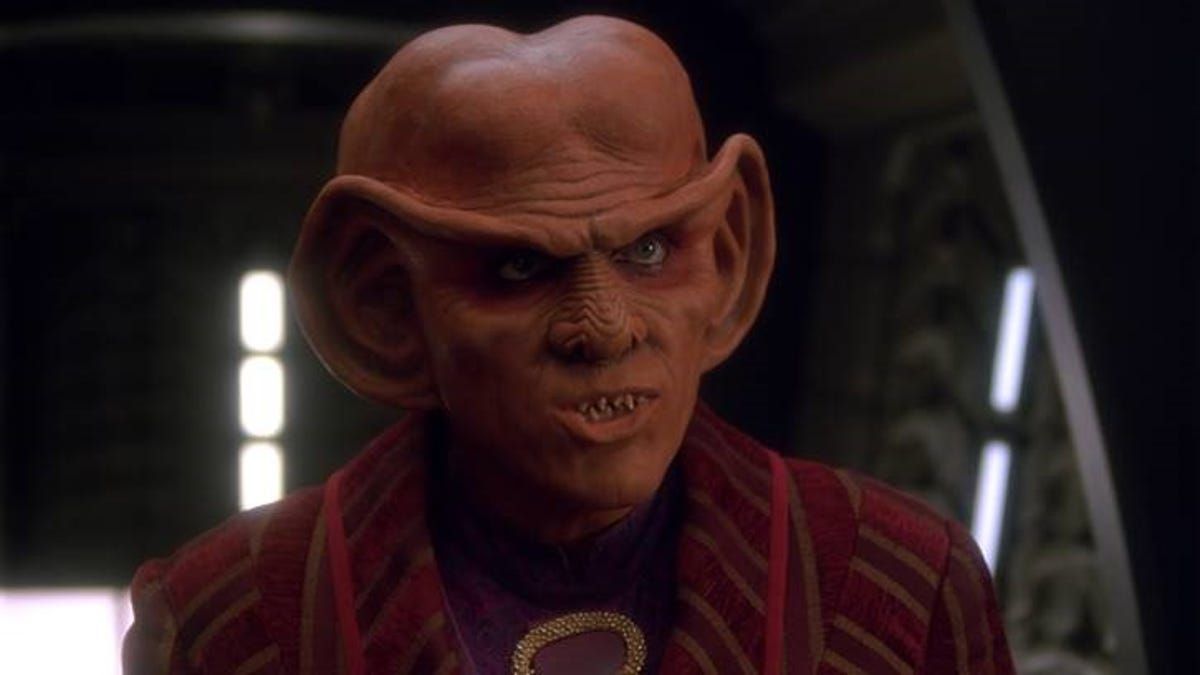Star Trek: The Next Generation had a notoriously rough start with Season 1 before course correcting and going on to become one of the greatest science fiction series of all time. That meant a number of concepts presented in the first season required significant changes. Chief among them, the Ferengi: a species originally planned as the Star Trek series' major new villains. That didn’t work out the way anyone thought it would, though, and required rethinking the entire species. Looking back on their early appearances, the difference between who they were intended to be and who they became is striking.
Trying to Make them Different Robbed Them of Their Menace
The difficulty with the Ferengi lay less in their core concepts than in the way their appearances in the first season chose to present them. n Season 1, Episode 4, “The Last Outpost," the Ferengi seemingly disable the Enterprise-D in short order, then overcome an entire away team with energy whips. It was followed a few episodes later by “The Battle,” which gave them a potent mind control device to deploy against Picard. In both cases, the episodes failed as drama
Unlike the Romulans or the Klingons, the Ferengi weren’t interested in conquest or control. They were predatory capitalists, looking to exploit resources for personal gain. That was intended to differentiate them from previous enemies. But right away, it blunted the threat they represented, since the slow-burn damage of capitalist overmining or wage exploitation doesn’t make for compelling television the way a conquest fleet does.
Furthermore, “The Last Outpost” does little to support the supposed danger they represent. As it turns out, the Ferengi ship was a red herring for the real threat – an ancient booby trap on a nearby planet – which caught both vessels in its grip. Add to that their short stature, their interest in petty crudities, and their weakness to something as trivial as loud noises, and viewers had a very hard time believing the menace they supposedly embodied. These flaws were compounded in “The Battle,” where the Ferengi villain turned out to be a rogue and the Ferengi government as a whole apologized for his use of outlawed technology. This was hardly a strong beginning for a species intended to be the new Klingons.
The Same Actor Redeemed the Ferengi in DS9
The main problem with these episodes lay in the scripts. Armin Shimerman himself starred as one of the Ferengi in “The Last Outpost," and considering his work on Star Trek: Deep Space Nine, it’s safe to say that casting wasn’t the issue. While Shimerman took responsibility for the debacle in an interview for Gamespot, his performance was strong; the episode had lost the plot well before his arrival.
Luckily, the producers weren’t ready to give up on the Ferengi, whose subsequent appearances on TNG, though sporadic, were more in keeping with their stated nature. Season 2 brought the Borg as the series’ showcase villains, and their introduction in "Q Who?" hit all the notes that “The Last Outpost” couldn’t find.
The Ferengi themselves received their due on Deep Space Nine thanks to Shimerman, Max Grodénchik and the late Aron Eisenberg. The revamp demonstrated that patience can be a virtue in the creative process, though it left some very odd content behind. A number of strong concepts were flat-out abandoned after Season 1; the Ferengi weren’t one of them, and Trek is better for it.



